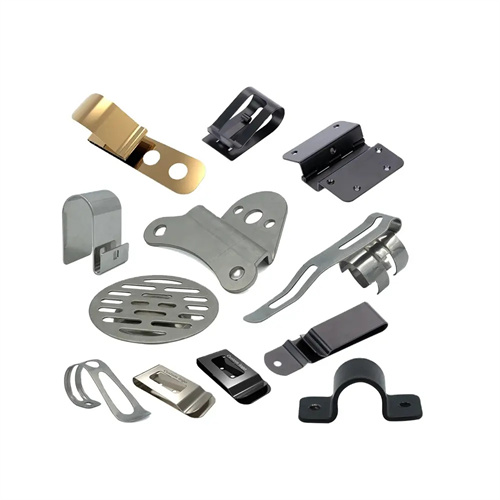
Spring Stamping
Spring and Stamping is a specialized manufacturing process that combines the principles of metal stamping and spring forming to produce components with both structural integrity and elastic properties. This process is used to create parts that require precise mechanical performance, such as springs, clips, and connectors, while also incorporating stamped features like holes, bends, or complex geometries. It is widely used in industries where components need to withstand repeated stress, provide flexibility, or ensure secure connections.
Features of Spring Stamping
Spring and Stamping is characterized by its ability to produce components with high elasticity, precision, and durability. The process ensures tight tolerances and consistent quality, making it ideal for applications requiring reliable performance. It is cost-effective for both prototyping and mass production and can handle a variety of materials and designs. The combination of stamping and spring forming allows for the creation of complex parts with both structural and functional properties.

Materials Used in Spring Stamping
Spring and Stamping can be performed on a variety of materials, depending on the application requirements. Common materials include high-carbon steel, stainless steel, beryllium copper, phosphor bronze, and nickel alloys. These materials are chosen for their strength, elasticity, corrosion resistance, and ability to withstand repeated stress and deformation.

Production Process of Spring Stamping
The production of Spring and Stamping Parts involves several steps. First, engineers design the part and create custom dies and molds for the stamping and spring forming process. The appropriate metal sheet or strip is then selected based on the part’s requirements. The metal is fed into a stamping press, where it undergoes operations such as blanking, bending, punching, or coining to achieve the desired shape and features. For spring components, additional processes like heat treatment or stress relief may be applied to enhance elasticity and durability. After forming, the parts may undergo finishing processes like deburring, polishing, or coating to improve their appearance and functionality. Finally, the parts are inspected for quality and performance to ensure they meet specifications.

Applications of Spring Stamping
Medical Devices
In the medical devices industry, Spring and Stamping is used to produce components such as surgical instruments, implantable devices, and diagnostic equipment. These parts require exceptional precision, biocompatibility, and reliability to ensure patient safety and device performance. Examples include precision springs for surgical tools, clips for medical devices, and stamped enclosures for diagnostic equipment.
Sports Goods
In the sports goods industry, Spring and Stamping is used to manufacture components such as buckles, clips, and small structural parts for sports equipment. These parts require high precision and durability to ensure safety and performance. Examples include springs for fitness machines, buckles for helmets and harnesses, and stamped clips for sports gear.
Toy
In the toy industry, Spring and Stamping is used to produce small metal components such as connectors, fasteners, and structural parts. These parts require high precision and durability to ensure safety and functionality. Examples include springs for mechanical toys, stamped connectors for assembling toys, and structural parts for ride-on vehicles.
Home Appliances
In the home appliances industry, Spring and Stamping is used to produce components such as switches, connectors, and small enclosures. These parts are essential for the assembly and functionality of appliances like microwaves, blenders, and vacuum cleaners. Examples include springs for switches, stamped connectors for electronic components, and small enclosures for control panels.
LED Lighting
In the LED lighting industry, Spring and Stamping is used to manufacture components such as heat sinks, reflectors, and mounting brackets. These parts require high precision to ensure optimal light distribution, heat dissipation, and durability. Examples include springs for mounting brackets, stamped heat sinks with intricate designs, and reflectors for light distribution.
Electronics
In the electronics industry, Spring and Stamping is used to produce connectors, terminals, shields, and enclosures. These components require tight tolerances and high reliability to ensure proper functionality and protection of electronic devices. Examples include springs for connectors, stamped terminals for circuit boards, and EMI/RFI shielding for electronic enclosures.
Spring and Stamping is a highly versatile and precise manufacturing process used in industries such as medical devices, sports goods, toys, home appliances, LED lighting, and electronics. Its ability to produce components with high elasticity, durability, and precision makes it ideal for demanding applications. As a manufacturer, leveraging Spring and Stamping technology can help you meet the diverse needs of your clients while maintaining high standards of quality and efficiency.